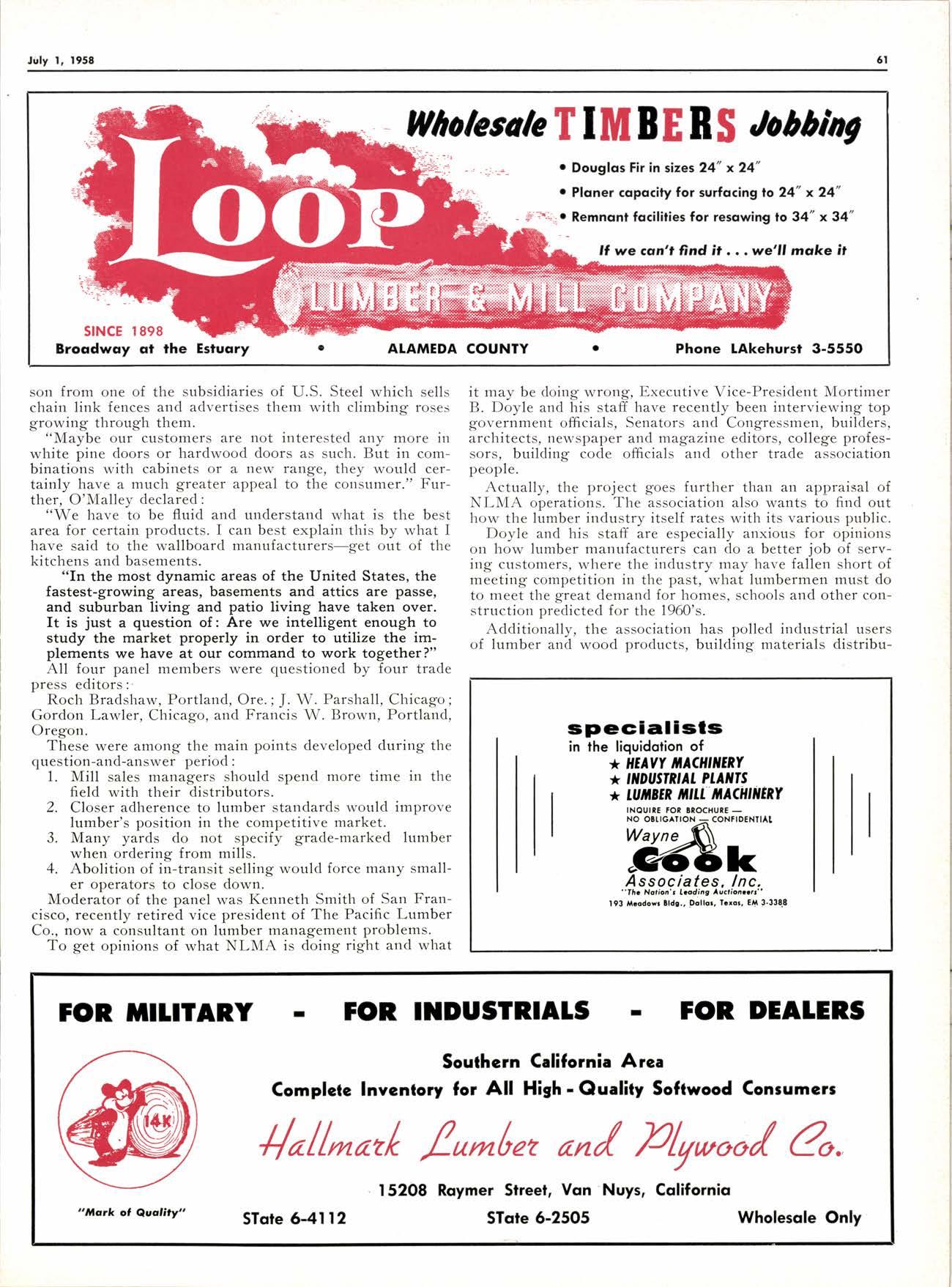
1 minute read
WholesaleT IM BE n$ hbblng
o Douglqs Fir in sizes 24" x 24"
Ploner copocity for surfocing lo 24" x 24" son from one of the subsidiaries of U.S. Steel which sells chain link fences and advertises them with climbing roses growing through them.
"Maybe our customers are not interestecl any more ir.r white pine doors or hardwood doors as such. But in combinations with cabinets or a new range, they would certainly have a much greater appeal to the consumer." Further. O'Malley declared :
"We have io be fluid and understand what is the best area for certain products. I can best explain this by what I have said to the wallboard manufacturers-get out of the kitchens and basements.
"fn the most dynamic areas of the United States, the fastest-growing areas, basements and attics are passe, and suburban living and patio living have taken over. It is just a question of : Are we intelligent enough to study the market properly in order to utilize the implements we have at our command to work together?"
All four panel members were questioned by four trade press editors:'
Roch Bradshaw, Portland, Ore.; J. W. Parshall, Chicago; Gordon Lawler, Chicago, and Francis W. Brown, Portland, Oregon.
These were among the main points developed during the question-and-answer period :
1. Mill sales managers should spend more time in the field with their distributors.
2. Closer adherence to lumber standards would improve lumber's position in the competitive market.
3. Many yards do not specify grade-marked lumber when ordering from mills.
4. Abolition of in-transit selling would force many smaller operators to close down.
Moderator of the panel was Kenneth Smith of San Francisco, recently retired vice president of The Pacific Lumber Co., now a consultant on lumber manag'ement problems. To get opinions of what NLMA is doing right and what it may be doing wrong, Executive Vice-President Mortimer B. Doyle and his staff have recently been interviewing top government ofiflcials, Senators and Congressmen, builders, architects, newspaper and magazine editors, college professors,_ building code officials and other trade association peopre.
Actually, the project goes further than an appraisal of NLMA operations. The association also wants to find out l-row the lumber industry itself rates with its various public. Doyle and his staff are especially anxious for opinions on how lumber manufacturers can do a better job of serving customers, where the industry may have fallen short of meeting competition in the past, what lumbermen must do to meet the great demand for homes, schools and other construction predicted for the 1960's.
Additionally, the association has polled industrial users of lumber and wood products, building materials distribu- tors and prefabbers.










